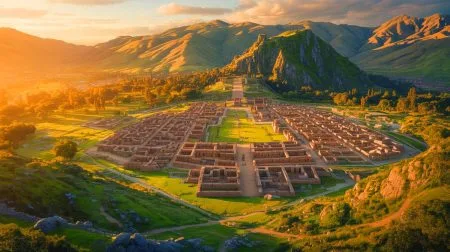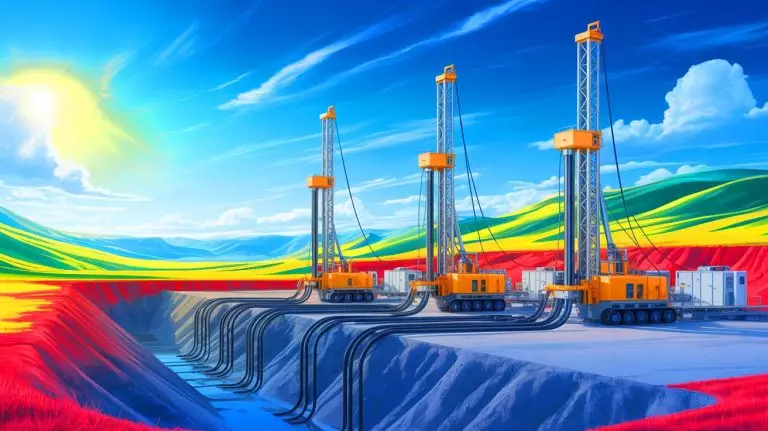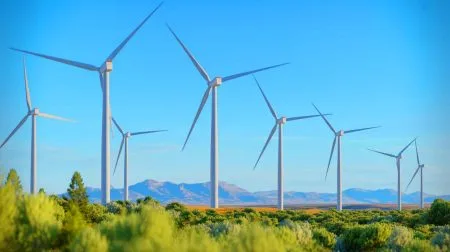| IN A NUTSHELL |
|
The quest for abundant and clean renewable energy has long faced technical and economic hurdles. However, recent advancements from the Laboratory of Experimental Rock Mechanics (LEMR) at the Swiss Federal Institute of Technology Lausanne (EPFL) bring significant hope. Published in Nature Communications, these findings reveal that even at supercritical depths, where rock becomes viscous and semi-plastic, geological formations can be fractured to allow water circulation. This development could transform geothermal energy into a source capable of meeting global energy needs in a clean and sustainable manner for millions of years.
Untapped Potential Beneath Our Feet
Geothermal energy, known for its stability and cleanliness, remains a marginal energy source, primarily confined to specific geographical areas like volcanic regions. The main limitation lies in the depth required to reach the hot rocks, an extremely costly and technologically complex operation. Yet, beneath Earth’s surface lies an almost infinite energy source: the planet’s internal heat. Tapping into this energy on a large scale could help solve two of the world’s greatest challenges: the climate crisis and energy shortage.
This resource is termed supercritical when, at depths of several miles, water reaches temperatures over 750 °F, becoming a fluid with both liquid and gas properties. This supercritical fluid can transfer significantly more energy than water at lower temperatures, potentially increasing geothermal power plant output tenfold compared to traditional plants. The primary challenge is drilling to these extreme depths.
Reaching depths where water becomes supercritical is a monumental task. The current drilling record is about 7.5 miles, achieved by Russia’s Kola borehole. However, to widely exploit supercritical geothermal energy, drilling would need to extend even deeper, often to distances still inaccessible with current drilling technologies. If such deep drilling is perfected, geothermal plants could be installed almost anywhere on Earth, including at former coal power plant sites, which already have infrastructure like grid connections and steam turbines.
The Crucial Role of Fracturing
One major technical question surrounding supercritical geothermal energy is the ability to circulate water through very deep rocks. At such depths, rock formations no longer behave like those near the surface. Rather than being hard and brittle, they become more ductile, deforming plastically. This ductility long led geologists to believe it impossible to fracture them, a process crucial for increasing the contact area between water and rocks.
This is where EPFL’s research, led by Gabriel Meyer, provides a breakthrough. By replicating the extreme temperature and pressure conditions encountered at these depths, researchers observed how rock behaves when transitioning from a brittle to a ductile state. Utilizing sophisticated equipment, including a triaxial gas apparatus and 3D imaging with a synchrotron, they analyzed rock samples under high pressure.
The results are surprising: although rock becomes plastic, it retains the ability to be fractured under certain conditions, akin to “Silly Putty”, a material that is both liquid and solid. If left undisturbed, it flows slowly like a liquid, but a quick shock breaks it like glass. According to Meyer, “geologists long believed the lower limit for water circulation in Earth’s crust was the brittle-ductile transition point. But we’ve shown water can also circulate in ductile rocks.”
Future Prospects for Geothermal Energy
The EPFL’s findings offer a promising future for geothermal energy. Companies like Quaise Energy, a coastal startup, aim to show that instead of using drill bits that easily break at such depths when temperatures rise, super-deep geothermal wells can be drilled using particle accelerator technology originally developed for fusion energy.
Firms such as Fervo Energy and Sage Geosystems have already demonstrated the effectiveness of fracturing in traditional geothermal plants. With these new advancements, it’s conceivable these techniques could apply to supercritical geothermal projects, exponentially increasing energy production.
Moreover, new records pave the way for large-scale geothermal energy exploitation, potentially revolutionizing our global energy landscape.
As these innovative approaches continue to develop, the potential for geothermal energy as a cornerstone of global energy solutions becomes increasingly tangible. How will these advancements shape the energy landscape in the coming decades, and what role will geothermal energy play in addressing the world’s growing energy demands?
Did you like it? 4.6/5 (26)








Wow, unlimited energy sounds too good to be true! Are there any environmental concerns with this tech? 🌍
Finally, a breakthrough in clean energy! Is this going to be expensive to implement on a large scale?
This is amazing news. I can’t wait to see its impact on our energy policies. 🙌
Does this mean we can finally close down all those coal power plants?
How long before we start seeing these geothermal plants in action?
Will this technology be available globally, or just in specific regions?
Supercritical sounds like a superhero. Can it save the planet? 🦸♂️
Is it just me or does “ductile rocks” sound like a rock band? 😂
Are there any risks of earthquakes from this deep fracturing?
How do they even know where to drill? Seems like a wild guess!
Particle accelerators for drilling? Sounds like science fiction! 🚀
Thank you for the update! Hope this really changes the game for clean energy.
I’m skeptical. Unlimited energy? We’ve heard that before. 🤔
If this works out, it could be the end of fossil fuels as we know it!
Will this be cheaper than solar or wind energy?
How deep do they actually need to drill to reach these supercritical depths?
Do we have enough expertise to manage such advanced technology?
The term “Silly Putty” in a scientific article made my day! 😂
The author should have noted that glass is also a plastic (very, very slow to slump unless at high heat)
Is this technology scalable for massive urban areas?
What about maintenance? How do they keep these systems running smoothly?
Does anyone else think this could be a game-changer for developing countries? 🌍
So, how soon can we expect energy bills to drop? Asking for a frend. 😅
This sounds promising, but what are the limitations?
Can this technology be integrated with existing energy infrastructures?
How does this compare to nuclear energy in terms of efficiency and safety?
Exciting stuff! Sign me up for the first geothermal-powered home. 🏠
Is there a possibility of tapping into this energy source without damaging the Earth?